Rules for the care of the queen of fragrances - cymbidium orchid
All flowering tropical plants are spectacular, but one of them has truly royal grandeur. The cymbidium orchid is the very embodiment of grace, lightness, tenderness, paradoxically combined with luxury, aristocracy and elegance. But this fragrant beauty has a significant disadvantage, because of which few decide to supplement her home flower garden. She is demanding and does not forgive mistakes in leaving.
Botanical features and types of cymbidium
The natural habitat for orchids with an unusual name - Cymbidium (Cymbidium) - moist and warm forests located in the eastern part of Asia (China, Japan). Certain types of flower are found in the mountains of Australia and Indochina. The relatively small (about 60 wild representatives) genus Cymbidium is part of the Orchid family. It has been known in culture for a long time: the history of growing these orchids goes back more than 2 millennia. Confucius also sang their scent.
Most cymbidiums are evergreen epiphytes, but there are also lithophytes and terrestrial species among them. Their leaves are leathery. They are long and have a xiphoid or linear shape. Their tips can be blunt or pointed. Young leaves emerge from pseudobulbs, egg-shaped bumps at the base of the stem, in which orchids accumulate moisture. The cymbidium grows not upward, but in breadth, forming new rosettes. From each of them, a peduncle appears over time. Orchid leaves live up to 3 years, and she herself - up to 7 years.
Some types of cymbidium have erect peduncles, while others are curved or falling. Their height can reach up to 1.5 m. Flowers are collected in a loose brush. Their number and size differ for each variety. This orchid blooms for a long time (1.5-3 months). Cymbidium is also good in cutting. For bouquets, hybrid forms of plants with large flowers are more suitable. They are popular with European and Australian florists. Chinese and Japanese flower growers prefer uncultivated varieties of orchids, the petals and leaves of which can be painted in a variety of shades. In the homeland of cymbidium, plants with small flowers are highly valued - their aroma is more pronounced.
Breeders have bred over 100 varieties of crops suitable for home breeding. But the indoor garden can also be decorated with wild cymbidium.
- Eburneum. The flower growers gave him a telling nickname - "ivory". The petals of the orchid are large, delicate cream shade. There are 1-2 buds on a peduncle. When they open, the house will fill with a pleasant scent reminiscent of lilac. Flowering begins in spring. This cymbidium needs to be kept at a moderate temperature.
- Dwarf. A rare but very spectacular orchid with short (up to 12 cm) erect peduncles. They appear at the beginning of winter. They bear large (up to 10 cm in diameter) flowers. Their petals are red-brown with a yellowish edge. Milky white lip covered with maroon specks.
- Aloe leaf. It is prized for its diminutiveness (plant height is only 30 cm). The flowers are medium in size (4.5 cm in diameter). They are located loosely. Their petals are pale yellow, the lip is burgundy. The length of the falling peduncle can be up to 40 cm;
- Tracy. Its flowers are large (up to 15 cm in diameter). On one stem (up to 1.2 m long) there can be up to 20. Narrow yellow-green petals and sepals are covered with an elegant pattern of red-brown stripes. The lip is creamy, strewn with scarlet specks. Its edges are wavy.Cymbidium Tracy releases flower stalks in autumn and pleases with new buds until January.
Having planted several varieties of plants with different flowering periods, you can admire the bright colors on the windowsill all year round.
Lighting and temperature
A tropical guest needs a lot of light, but direct sunlight is harmful to her. Curtains or tulle will help to scatter them. In autumn and winter, the cymbidium orchid will be comfortable on the south window. During periods of high solar activity (spring and summer), the plant is best kept on the west or east side of the house. If there is no way to rearrange the pot, the flower is shaded. In the winter months, the day for the cymbidium is artificially extended using fluorescent lamps. An orchid suffering from a lack of lighting loses its decorative effect: its leaves become pale and lethargic, cease to keep their shape, the formation of new pseudobulbs and peduncles slows down.
The habitats of wild orchids are characterized by sharp changes in day and night temperatures (the difference between them is 8-10 ° C). Most of the cultivated flower species and hybrids need similar conditions. On summer days, they are kept at a temperature of 18-25 ° C, reducing it at night to 13-15 ° C. In winter, the cymbidium feels good if the air in the room is warmed up to 16-18 ° C during the day, and it becomes much cooler in the evenings (10-12 ° C).
Failure to comply with the temperature regime will not destroy the plant, but it is the main reason that the orchid does not bloom. Dwarf species of cymbidium are less capricious in this respect. With the arrival of heat (when the thermometer reaches 12 ° C), the plant is exposed to fresh air. In combination with being in the room, the summer heat can negate all the efforts of the grower: having lost turgor, the leaves wrinkle, and the roots of the cymbidium will begin to die off. It is recommended to keep the pot with it on the balcony or veranda until late autumn.
Plant care
An actively growing orchid needs a lot of moisture, so water it abundantly using soft water. Before the procedure, it is warmed up to 30-45 ° C. It is important not to overdo it here: in damp soil, the roots of the cymbidium rot. The appearance of black spots on its leaves indicates that the plant is not well. To avoid this, after watering, the sump is freed from the liquid drained into it. The orchid will not benefit from drying out the soil. Among its negative consequences:
- shrinkage of pseudobulbs;
- falling of buds and flowers.
In the autumn-winter period, the frequency and volume of watering depend on the air temperature in the room. If it is at the level recommended for the cymbidium, moisturize the flower moderately with an interval of 2 weeks. When keeping the orchid warm, watering is carried out more often.
Advice
Whether the plant has enough moisture can be judged by the state of the pseudobulb.
In the homeland of the flower, the air is humid, a similar microclimate will have to be created for it at home. In the summer, regular spraying will help solve this problem. Such care has a positive effect on the leaves of the plant, cooling them. It is carried out in the early morning and in the evening - this reduces the risk of sunburn. In a cool room, spraying the leaves can harm the plant, therefore, in autumn and winter, the air humidity is increased to 50-60% comfortable for the cymbidium in other ways:
- filling the pallet with wet pebbles, sand, moss;
- placing containers with water next to the pot;
- using special electrical appliances.
Feeding the flower fertilizers for orchids... Their dosage is made half the recommended by the manufacturer. Nutrient compositions are introduced into already moistened soil. The frequency of fertilizing is determined by watering: they are carried out after every 3 procedures (usually every 2 weeks), but not during the period when the orchid is blooming. From mid-summer, it is recommended to use formulations rich in potassium and containing a minimum of nitrogen.This ratio of nutrients will help the cymbidium at home to lay more flower buds.
Transfer
Gradually expanding, the orchid occupies the entire pot. When there is no room left for the rooting of new pseudobulbs, the home cymbidium is transplanted into a wider container. Usually he needs to replace the container every 2-3 years. The procedure can be performed if the last flowers have already withered, and the young shoots have stretched up to 5-15 cm in height. The orchid does not like anxiety, therefore, frequent transplantation is contraindicated for it. But she reacts favorably to the annual renewal of the upper layer of the substrate in the pot.
Ready-made soil for orchids is suitable for cymbidium. At home, the substrate for the flower is made up of 5 components:
- pine bark;
- pieces of sphagnum;
- fern roots;
- rotted horse manure;
- charcoal.
You can add peat, coarse sand and gravel to the first 2 components. To increase the air permeability of the substrate, crushed foam is mixed into it. In dense soil, the roots of the cymbidium quickly begin to rot. Good aeration minimizes the risk of prolonged waterlogging and the development of fungal diseases. It is also important for the nutrition of the orchid, the roots of which actively absorb nitrogen from the air. The inclusion of perlite in the soil will also be useful for a flower grown at home. By retaining moisture, it becomes a good help in combating dry air.
Drainage from expanded clay or clay shards is laid on the bottom of the pot, prepared substrate is poured on top (2-3 cm layer). The plant is removed from the container, trying not to injure the fragile roots of the cymbidium. They are freed from old soil (warm water can be used to clean the shoots) and carefully examined. If they have dead, damaged or rotten areas, they are pruned. Do the same with too long healthy roots. If they are not shortened, there is a high probability that they will bend or break during transplantation.
The cut points must be disinfected. Here will help:
- powdered activated carbon;
- brilliant green;
- ground cinnamon.
Having placed the flower in a new pot, the roots of the cymbidium are covered with fresh substrate, leaving the pseudobulbs open. Their deepening or injury threatens the plant with rotting. If the roots of the orchid are not cut off, the transplant ends with watering. They lead him along the edge of the pot. Otherwise, the substrate is moistened only after 2-3 days. The transplanted flower is allowed to recover from stress by placing the pot in partial shade. In hot weather, it is advisable to spray the leaves of the plant.
Reproduction methods
A transplant is the ideal time to divide the cymbidium bush. This procedure is carried out in several stages.
- Carefully remove the plant from the pot.
- Dry roots are cut off with a sharp knife (they are gray and look lifeless, located in the lower part of the soil coma). The tool is pre-disinfected - the blades are calcined or wiped with alcohol.
- Divide the bush into parts. Their number determines the number of pseudobulbs.
There are at least 3 of them on the correct cut. Older pseudobulbs (1-2) already have roots. They will provide the bush with food until its young part releases its own. When this happens, the process of forming new pseudobulbs and flower growth will begin.
Charcoal is sprinkled over fresh wounds to prevent plant infection. Then the delenki are planted in individual pots. High humidity and warmth will help them take root faster. Until young orchids release new leaves (this will happen in about 1.5-2 months), caring for them consists in moderate watering and frequent spraying.
The generative method of reproduction of cymbidium at home will not bear fruit, so buying its seeds is meaningless. You can try to grow an orchid from old pseudobulbs that will no longer bloom.They are separated from the bush during transplantation and placed on wet sphagnum in a mini-greenhouse, where they are kept until roots and shoots form.
Possible difficulties
The capricious orchid reacts sharply to violations of agricultural technology, and it is far from always possible to restore its former beauty.
Causes of problems with cymbidium and ways to eliminate them
| Symptoms | Priciina | Decision |
|---|---|---|
| Lack of flowering | Non-compliance with the temperature regime | Reduce watering, ensure a difference of at least 4-5C between day and night temperatures, keep the flower in the evening at 10-13C |
| Drying of leaf tips | Dry air | Frequent spraying, additionally use other methods of increasing air humidity |
| Excess soil moisture | Reduce watering so that the substrate dries out between treatments | |
| Yellowing of leaves, browning of their tips | Decay of roots | Transplant the plant into fresh, dry soil, cutting off rotten shoots. Resume watering when new roots appear. Exclude spraying. Determine what caused decay (excessive watering combined with low temperature, dense substrate, infection) and eliminate its cause |
| Dark streaks or yellowish streaks appear on the leaves | Viral infection | It will not be possible to save the flower, it must be destroyed so that the disease does not affect other plants |
| Shrinking pseudobulbs | Drying out of the soil | Normalize watering |
| Underdevelopment of buds, their fall | Lack of calcium and phosphorus | Provide the plant with these elements |
On the weakened cymbidium due to the content in dry air, pests can settle:
- aphids;
- scabbards;
- spider mite;
- thrips.
The invasion of insects will result in a loss of decorativeness: the leaves of the orchid will begin to deform and turn yellow, and its buds will quickly fade or fly around without blooming. A few insects are removed with a sponge dipped in a solution of laundry soap. In advanced cases, the flower will have to be treated with insecticides. To prevent the leaves of the cymbidium from becoming covered with burns, the dosage of the drug is reduced by 2 times. You won't have to fight pests if you regularly inspect the plant and create a suitable microclimate for it.
The enchanting beauty and pleasant aroma of the cymbidium orchid have won more than one heart. Although caring for a plant consists of procedures familiar to most flower growers, and it lives at home for a long time, it can rarely be seen on window sills. And the reason for this is not the scarcity of the range of floristic shops, but the specific requirements of the cymbidium. There is no contradiction here, because the conditions of the apartment are very different from those for which nature created this beautiful orchid.
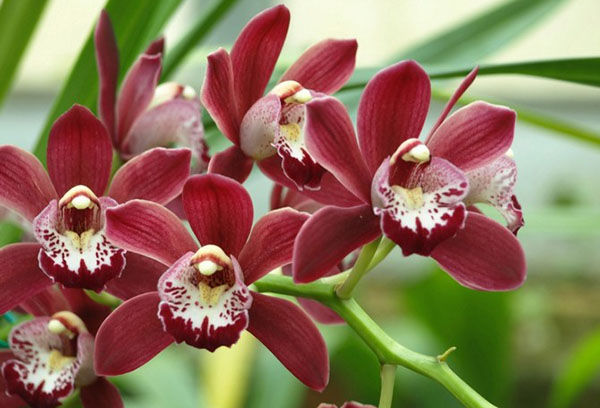
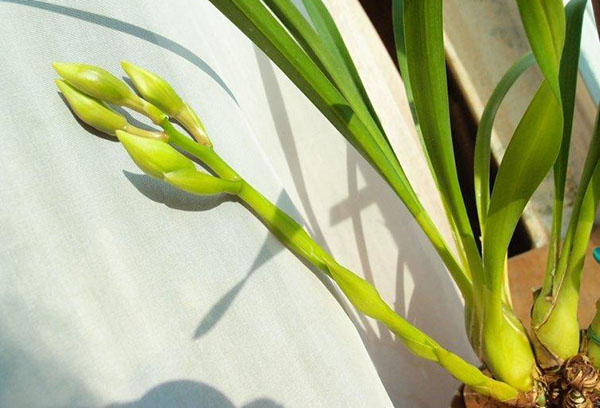

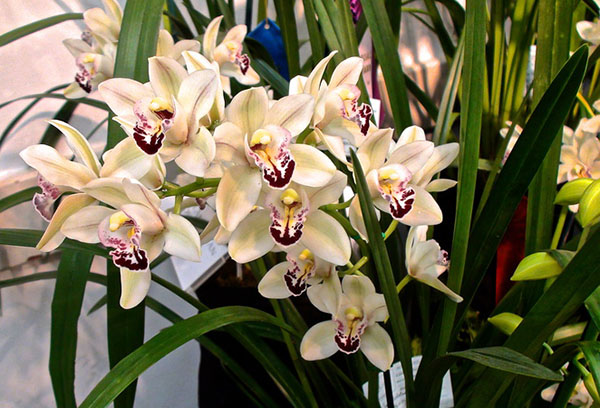
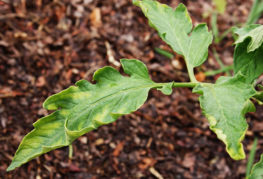


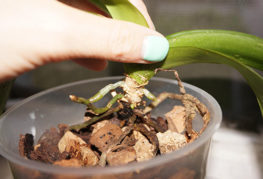
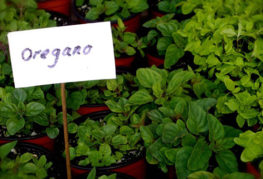
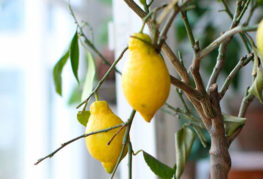
and will be published shortly.